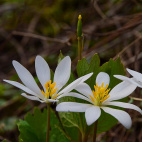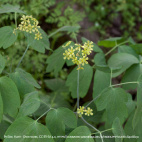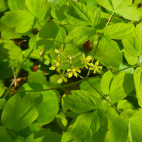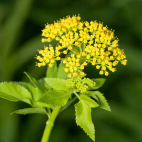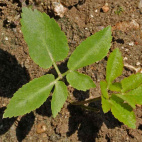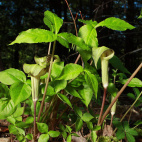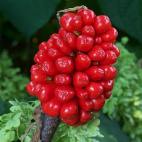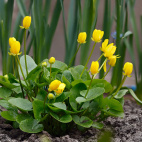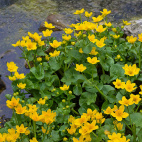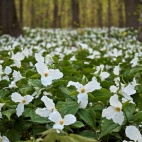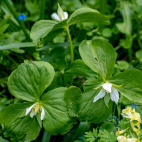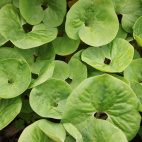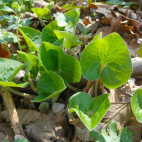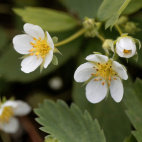Color
Availability
USDA Zone
Region
Type
Duration
Season
Germination
Soil
Sunlight
Height
Use
Narrow Your Search
Color
Availability
USDA Zone
Region
Type
Duration
Season
Germination
Soil
Sunlight
Height
Use
Wildflower Seeds - Southeast Region
The Southeast Region gets a lot of moisture and heat, better known as humidity. The warm Gulf waters provide a steady supply of moisture, and keeps it green for much of the year. Some areas experience cold and snow in the winter months, but it is usually pretty short-lived. If you live in this region, you can grow a lot of native wildflower seeds without too much trouble, but will need to watch out for species that can't handle too much heat or moisture. Also, some of the native species of the Midwest require a cold dormant season to complete their life cycle, so if you do not have enough chill hours, they might not grow well. Other than that, you have a lot of bulk flower seed packets available here, and can tailor them to your needs by filtering the results with the left-hand menu.
-
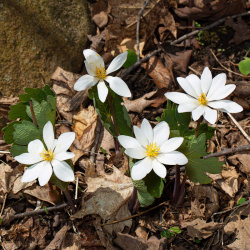 Store in the Fridge
Bloodroot Seeds
Sanguinaria canadensis
These white woodland beauties are one of the first ephemerals to emerge in the spring. This wildflower has been prized for many medicinal uses as well. The large-leaved foliage also makes an attractive woodland ground cover.Quick View$3.75 Pkt - $160.00 / Oz
Store in the Fridge
Bloodroot Seeds
Sanguinaria canadensis
These white woodland beauties are one of the first ephemerals to emerge in the spring. This wildflower has been prized for many medicinal uses as well. The large-leaved foliage also makes an attractive woodland ground cover.Quick View$3.75 Pkt - $160.00 / Oz -
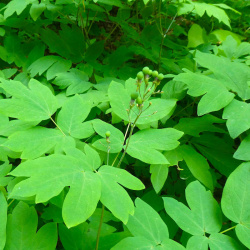 Store in the Fridge
Blue Cohosh Seeds
Caulophyllum thalictroides
Great for ornamental purposes, buy the blue cohosh for a bushy perennial that produces greenish flowers and bright blue berries. This woodland plant also has medicinal uses.Quick View$4.48 Pkt - $27.00 / Oz
Store in the Fridge
Blue Cohosh Seeds
Caulophyllum thalictroides
Great for ornamental purposes, buy the blue cohosh for a bushy perennial that produces greenish flowers and bright blue berries. This woodland plant also has medicinal uses.Quick View$4.48 Pkt - $27.00 / Oz -
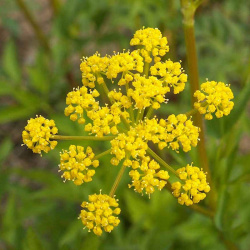 On Sale!
Golden Alexanders Seeds
Zizia aurea
These lacy yellow clusters begin to show at the beginning of spring. In the wild, these native perennials are often found growing in moist areas with dappled light. This species is often a component of native seed mixes because the early blooming flowers are a critical food source for pollinators.Quick Viewx
On Sale!
Golden Alexanders Seeds
Zizia aurea
These lacy yellow clusters begin to show at the beginning of spring. In the wild, these native perennials are often found growing in moist areas with dappled light. This species is often a component of native seed mixes because the early blooming flowers are a critical food source for pollinators.Quick ViewxGolden Alexanders Seeds
Zizia aurea
These lacy yellow clusters begin to show at the beginning of spring. In the wild, these native perennials are often found growing in moist areas with dappled light. This species is often a component of native seed mixes because the early blooming flowers are a critical food source for pollinators.
$3.48 Pkt - $9.54 / Oz -
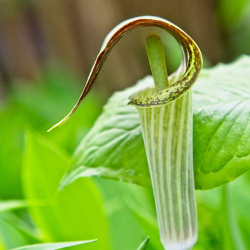 Store in the FridgeOn Sale!
Jack in the Pulpit Seeds
Arisaema triphyllum
Named for its resemblance to a preacher in a canopied pulpit, this unusual plant sends up a hooded flower. This fascinating native plant grows in woodland and marsh areas across much of the Eastern US.Quick View$3.75 Pkt - $54.00 / Oz
Store in the FridgeOn Sale!
Jack in the Pulpit Seeds
Arisaema triphyllum
Named for its resemblance to a preacher in a canopied pulpit, this unusual plant sends up a hooded flower. This fascinating native plant grows in woodland and marsh areas across much of the Eastern US.Quick View$3.75 Pkt - $54.00 / Oz -
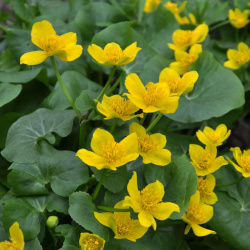 Store in the FridgeOut Of Stock
Marsh Marigold Seeds
Caltha palustris
Traditionally known as cowslips or kingcups, marsh marigolds often bring the first spring color to their native marsh. Thriving in bogs and swamps, they also make a lovely addition to a water garden.Quick View$3.75 Pkt - $200.00 / Oz
Store in the FridgeOut Of Stock
Marsh Marigold Seeds
Caltha palustris
Traditionally known as cowslips or kingcups, marsh marigolds often bring the first spring color to their native marsh. Thriving in bogs and swamps, they also make a lovely addition to a water garden.Quick View$3.75 Pkt - $200.00 / Oz -
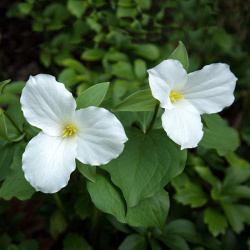 Store in the Fridge
White Trillium Seeds
Trillium grandiflorum
This rare beauty showcases its signature three-petaled blossoms in woodland areas. Actually a type of native lily, the Trillium is often protected or endangered because of its rarity and slow growth. These seeds take a lot of skill and patience to grow.Quick View$3.96 Pkt - $320.00 / Oz
Store in the Fridge
White Trillium Seeds
Trillium grandiflorum
This rare beauty showcases its signature three-petaled blossoms in woodland areas. Actually a type of native lily, the Trillium is often protected or endangered because of its rarity and slow growth. These seeds take a lot of skill and patience to grow.Quick View$3.96 Pkt - $320.00 / Oz -
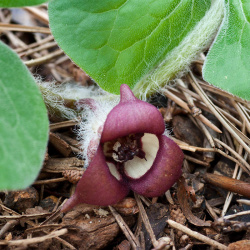 Store in the FridgeOut Of Stock
Wild Ginger Seeds
Asarum canadense
While the reddish-brown flowers are often overlooked, this pretty wild ginger plant is valued for its decorative foliage. It also makes an excellent low ground cover for shaded areas.Quick View$3.75 Pkt - $160.00 / Oz
Store in the FridgeOut Of Stock
Wild Ginger Seeds
Asarum canadense
While the reddish-brown flowers are often overlooked, this pretty wild ginger plant is valued for its decorative foliage. It also makes an excellent low ground cover for shaded areas.Quick View$3.75 Pkt - $160.00 / Oz -
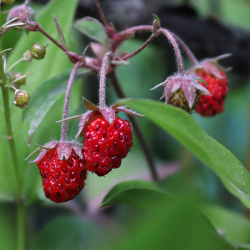 Wild Strawberry Seeds
Fragaria virginiana
Native to the United States, this plant bears tiny, wild strawberries. They are flavorful and sweet, albeit seedier than their cultivated cousins. Great for the homestead garden!Quick View$3.96 Pkt - $400.00 / Oz
Wild Strawberry Seeds
Fragaria virginiana
Native to the United States, this plant bears tiny, wild strawberries. They are flavorful and sweet, albeit seedier than their cultivated cousins. Great for the homestead garden!Quick View$3.96 Pkt - $400.00 / Oz
The Southeast Region gets a lot of moisture and heat, better known as humidity. The warm Gulf waters provide a steady supply of moisture, and keeps it green for much of the year. Some areas experience cold and snow in the winter months, but it is usually pretty short-lived. If you live in this region, you can grow a lot of native wildflower seeds without too much trouble, but will need to watch out for species that can't handle too much heat or moisture. Also, some of the native species of the Midwest require a cold dormant season to complete their life cycle, so if you do not have enough chill hours, they might not grow well. Other than that, you have a lot of bulk flower seed packets available here, and can tailor them to your needs by filtering the results with the left-hand menu.






